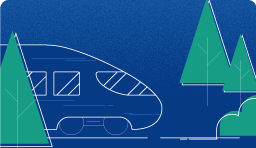Project Status
Watch how Rail Baltica picks up speed!
WHERE ARE WE NOW?
The Rail Baltica project is already under way. Technical design works have been started for the entire main line in Estonia and Latvia, as well as for sections running from Kaunas to the Lithuania/Latvia border, amounting to 643 km of the 870 km-long track. As part of the development of these detailed technical designs, various calculations and projections are being made — noise modelling, water level measurements, mammal monitoring and more are being taken into account in order to develop a sustainable, safe and efficient railway.
At the same time, the designs for the stations in Tallinn, Pärnu, Rīga Central Station and Rīga International Airport are being developed. Construction works for certain infrastructure objects along the Rail Baltica main line are taking place in Kaunas and in Estonia, where the Saustinõmme viaduct is being built. In 2020, it is also planned to start construction in Rīga Central Station. Check out the full progress in our interactive map.
GEOTECHNICAL RESEARCH
In order to obtain necessary information about the composition of the soil and to understand its physical properties, substantial geotechnical research is being carried out. Insights from this research will be used in the design process of the Rail Baltica main route and in the development of sustainable technical solutions. Experts use different drilling methods that can reach up to 25 m in depth to study the ground conditions. Moreover, the land will not be damaged as a result of the research, and upon its completion the initial conditions will be restored.
ARCHEOLOGICAL RESEARCH
It is not only important to find efficient and sustainable technical solutions, but also to preserve the cultural heritage of the region.
The project’s archeological research is already finished in Latvia. Archeologists, historians, architects and other specialists were involved in the process of exploring different sites, covering long distances by foot and even climbing onto roofs to gain insights. These research results have been compiled in 25 volumes — evidence of military history and past economic activity have been uncovered, a number of explosives have been identified and neutralized, and possible signs of ancient populations have been found in certain locations. Recommendations are being provided that will help to protect historical objects during and after the construction works. This process is ongoing in Estonia and Lithuania.



